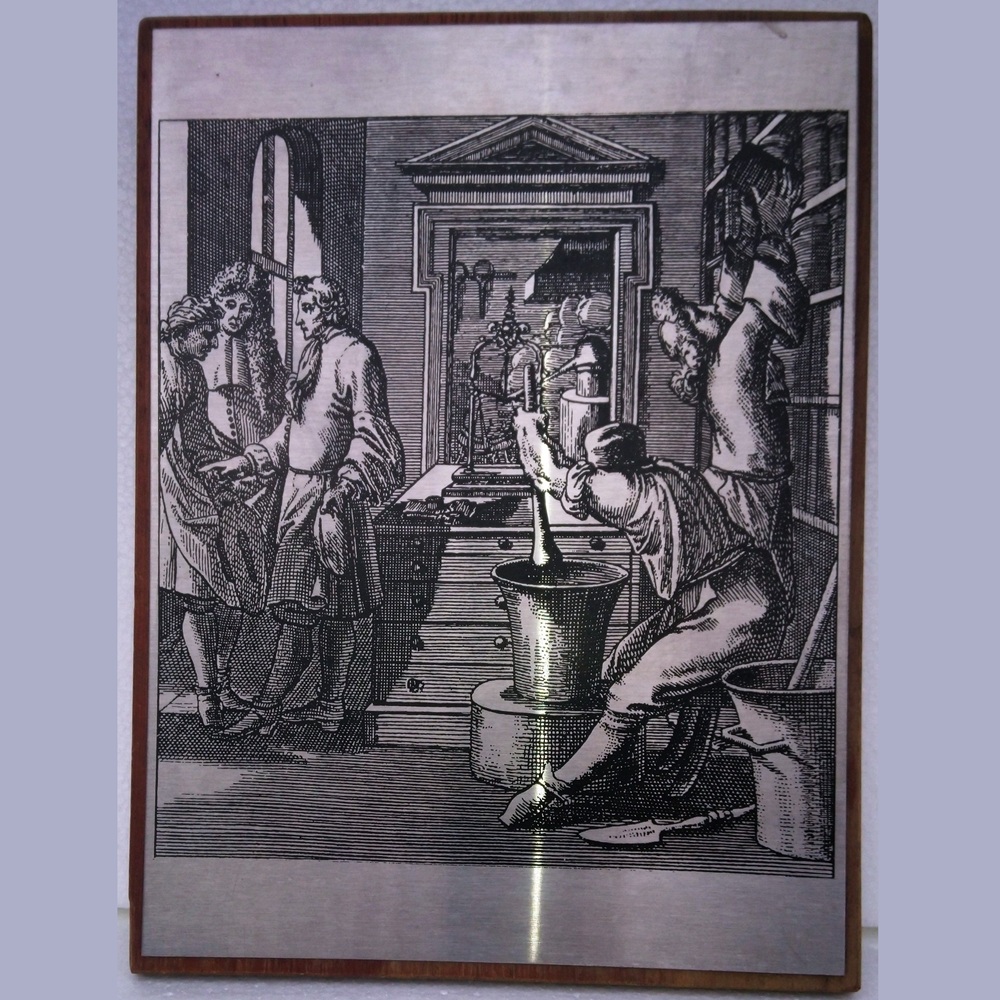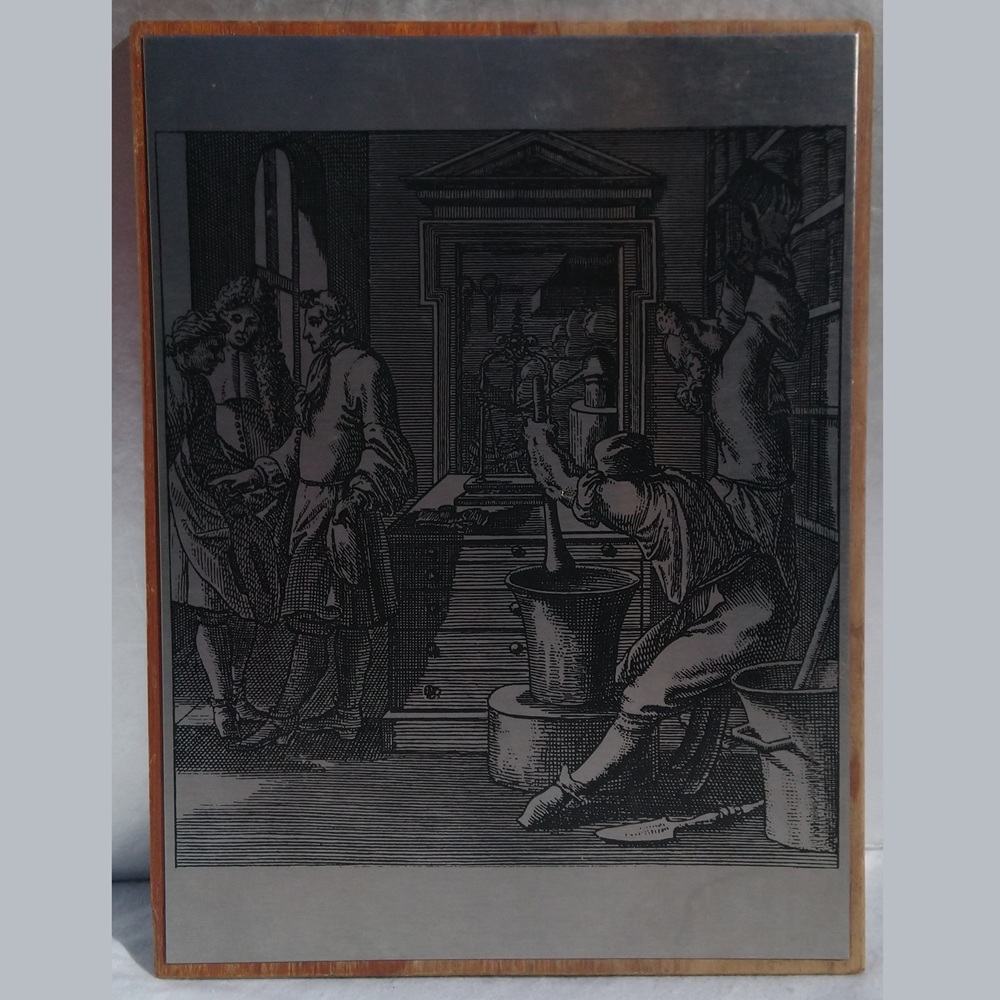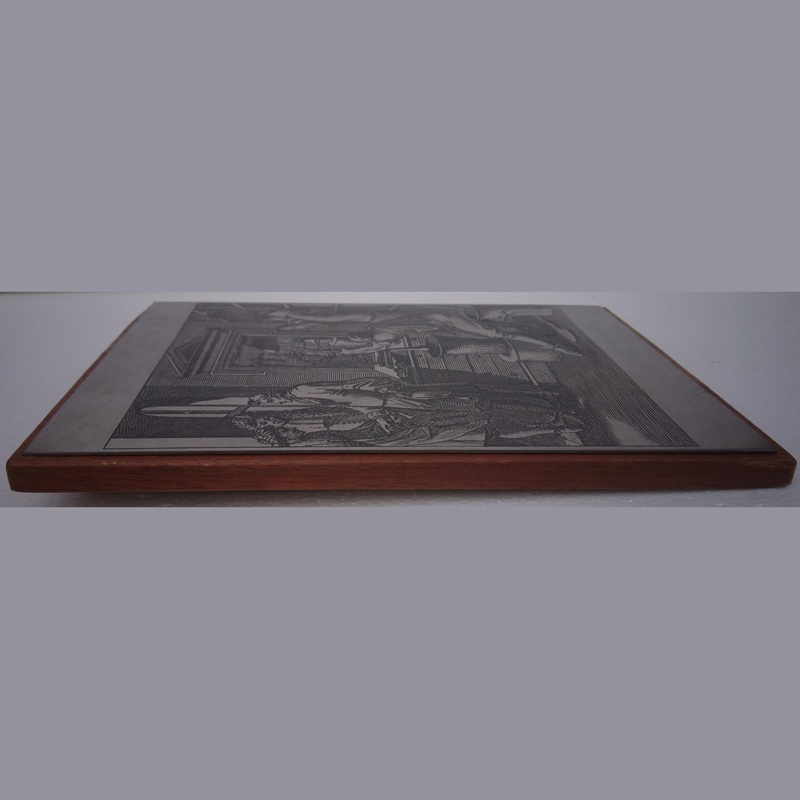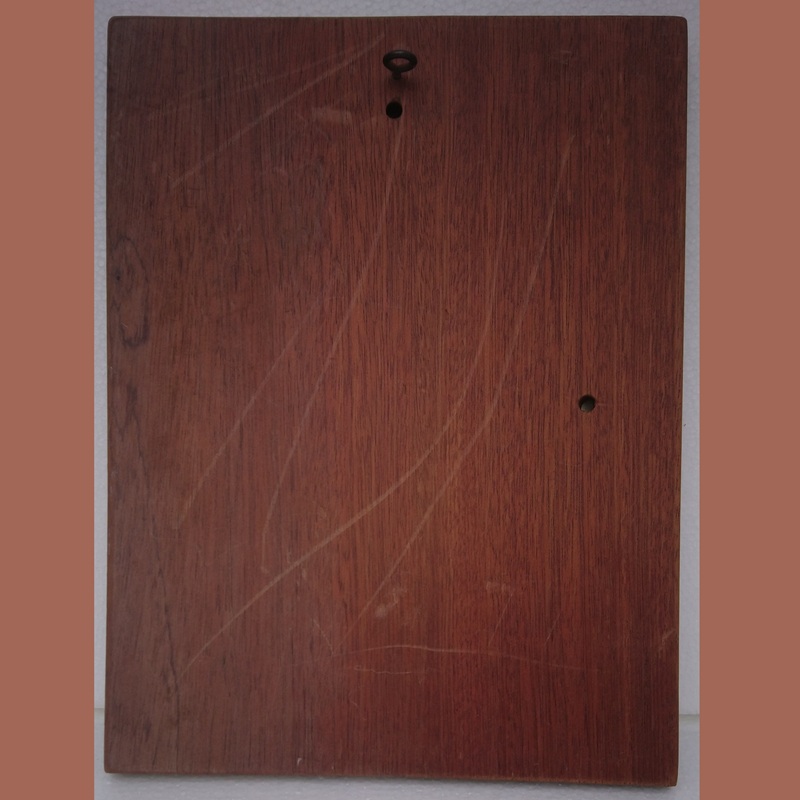




Plaque de gravure d'imprimerie Française du 19ème siècle - French printing engraving plate from the 19th century
49.00 €
Référence : 25-00127
Plaque gravure
Dimensions :De la plaque de gravure :
Hauteur :
largeur :
Epaisseur :
Du support mural en bois :
Hauteur : 25 cm
largeur : 19 cm
Epaisseur : 1,3 cm
Etat correct.
Plaque de gravure d'imprimerie en acier du début du XIXème siècle.
L'homme a gravé depuis l'antiquité (500 ans avant J.C.) sur des pierres, des tablettes en argile.
C'est au moyen âge, en Europe, que la gravure en taille-douce, appelée aussi gravure en creux, connut son essor. L'artiste gravait son oeuvre sur un support dur et plat en cuivre, en acier ou en zinc sur lequel l'encre était déposée dans les creux gravés par le graveur et l'impression s'obtenait avec une presse à taille-douce par un procédé à l'eau-forte (acide). Avec ce procédé, l'oeuvre était reproduite plusieurs fois sur un autre support, du papier en général. Les livres anciens étaient illustrés grâce à ces estampes, nom donné aux résultats obtenus par cette méthode de gravure. Dans le langage courant "estampe" est dénommée "gravure".
Cette plaque a été utilisée en imprimerie afin d'éditer des estampes. Sa gravure représente une imprimerie avec sa presse, des étagères pour y ranger les livres terminés, un employé mélangeant les produits nécessaires à son métier et d'autres intervenants richement vêtus. Un crochet de fixation murale y a été rajouté afin de continuer à profiter de cet objet à titre décoratif puisque l'offset a ensuite fait son apparition en imprimerie, à la fin du XIXème siècle, mettant ainsi au rebus ces plaques d'antan.
Comme la 1ère photo présente clairement le sujet de la plaque, le liseré vertical de lumière visible au bas de cette 1ère photo est un effet d'optique dû au flash puisqu'il n'apparaît pas sur la 2ème photo plus sombre prise sans flash. Dans la réalité, l'article ne comporte pas cette trace claire.
Un bel objet du savoir faire de l'artiste graveur de cette époque révolue !
 Click to translate into English
Click to translate into English
(Cliquez pour traduire en anglais)
Steel engraving plate from the early nineteenth century.
Man has been engraving clay tablets on stones since antiquity (500 BC).
It was in the Middle Ages, in Europe, that intaglio engraving, also called intaglio engraving, experienced its boom.
The artist engraved his work on a hard, flat copper, steel or zinc support on which the ink was deposited in the hollows engraved by the engraver and the printing was obtained with an intaglio press by an etching (acid) process. With this process, the work was reproduced several times on another medium, usually paper. Old books were illustrated with these prints, the name given to the results obtained by this method of engraving. In everyday language, "print" is called "engraving".
This plate was used in printing to print prints. His engraving depicts a printing press with its press, shelves to store finished books, an employee mixing the products necessary for his trade and other richly dressed workers. A wall fixing hook has been added in order to continue to enjoy this object for decorative purposes since offset then appeared in printing at the end of the nineteenth century, thus discarding these plates of yesteryear.
As the 1st photo clearly shows the subject of the plate, the vertical border of visible light at the bottom of this 1st photo is an optical effect due to the flash since it does not appear on the 2nd darker photo taken without flash. In reality, the article does not have this clear trace.
Size :
From the engraving plate :
Height :
width :
Thickness :
Wooden wall support :
Height : 25 cm
width : 19 cm
Thickness : 1.3 cm
Correct condition.
A beautiful object of the know-how of the engraver artist of this bygone era !
Man has been engraving clay tablets on stones since antiquity (500 BC).
It was in the Middle Ages, in Europe, that intaglio engraving, also called intaglio engraving, experienced its boom.
The artist engraved his work on a hard, flat copper, steel or zinc support on which the ink was deposited in the hollows engraved by the engraver and the printing was obtained with an intaglio press by an etching (acid) process. With this process, the work was reproduced several times on another medium, usually paper. Old books were illustrated with these prints, the name given to the results obtained by this method of engraving. In everyday language, "print" is called "engraving".
This plate was used in printing to print prints. His engraving depicts a printing press with its press, shelves to store finished books, an employee mixing the products necessary for his trade and other richly dressed workers. A wall fixing hook has been added in order to continue to enjoy this object for decorative purposes since offset then appeared in printing at the end of the nineteenth century, thus discarding these plates of yesteryear.
As the 1st photo clearly shows the subject of the plate, the vertical border of visible light at the bottom of this 1st photo is an optical effect due to the flash since it does not appear on the 2nd darker photo taken without flash. In reality, the article does not have this clear trace.
Size :
From the engraving plate :
Height :
width :
Thickness :
Wooden wall support :
Height : 25 cm
width : 19 cm
Thickness : 1.3 cm
Correct condition.
A beautiful object of the know-how of the engraver artist of this bygone era !



